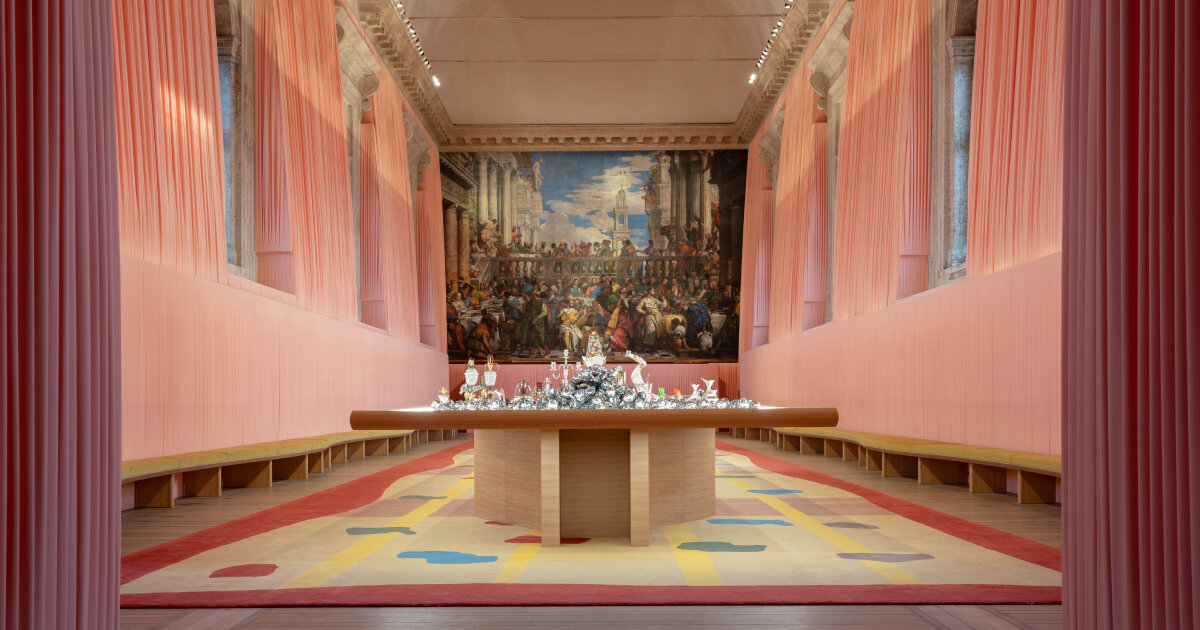Luca guadagnino and Nicolò Rosmarini in homo faber 2024
In Venice, Homo Faber 2024 welcomes its third edition at Fondazione Giorgio Cini on San Giorgio Maggiore island, running from September 1st to 3rd, 2024. For this year, the organizer Michelangelo Foundation for Creativity and Craftsmanship and its partners have chosen the theme ‘Journey of Life,’ devised by the Foundation’s Vice-Chair, Hanneli Rupert. They tapped director Luca Guadagnino to stage the event’s scenography and artistic direction, but it’s not a one-man team, not after he teams up with Milanese architect Nicolò Rosmarini so his production and exhibition design can come to life, one that designboom had had the chance to witness before its opening.
And life does come as ten themed exhibitions that welcome visitors. Their names follow the life-to-afterlife timeline: Birth, Childhood, Cypresses and Magnolias: a papier-mâché wood, Celebration, Inheritance, Love (Courtship), Love (Union), Journeys, Nature, Dreams, Dialogues, and Afterlife. In the Venetian event, Luca Guadagnino and Nicolò Rosmarini’s scenography leads viewers to what life means and what the afterlife may look like. The filmmaker says it has always been his job to find a way to tell a story with what is given to him. ‘This amazing and very streamlined and universal concept of the Journey of Life led us to understand how to envelop the audience through the amazing architecture of the Fondazione Cini so that the craft on display was not going to be overwhelmed, but at the same time the place itself was given a lot of relevance,’ he says.
Birth, Giulio Ghirardi | all images courtesy of Michelangelo Foundation, unless stated otherwise
‘Journey of life’ brims with pastels, pink and lots of vibrant hues
Luca Guadagnino is known for his movies Call Me By Your Name, Bones and All, Suspiria, and recently, Challengers. It’s no surprise he takes the meaning of life to heights by adding his flair for art-making. When visitors step inside Homo Faber 2024 in Venice, they walk through a ticket booth, showered with pastels and pink, and plenty of them. They pass through the passerella, thriving in colors such as apricot, powder, gray, and pink, linking each of the ten exhibitions. Mirrors become an object of repetition for the Italian film director, appearing in all stages to reflect the island’s surroundings as well as the natural light. Some pleated fabric walls come up too, a way for Luca Guadagnino to pay homage to the Venetian-born designer Carlo Scarpa, one of his artistic influences.
Beauty and color shine through Luca Guadagnino and Nicolò Rosmarini’s life and afterlife. They’re not bleak and fiery, but filled with lightness and playful objects. They’re flocked by a pair of 12-meter-high papier-mâché cypress trees, a dream-like reimagining of the Fondazione Giorgio Cini’s former swimming pool, and a forest of chandeliers descending from the ceiling of the Sala degli Arazzi. Even tributes to architecture and design notables such as Lina Bo Bardi come through, especially with the use of her famed glass easels with concrete bases. There’s even a tea room gleaming in Art Deco design, and at the end of the exhibition, the two art directors ask the visitors to ponder what death after life can feel and look like with two final rooms: one in black and one in white.
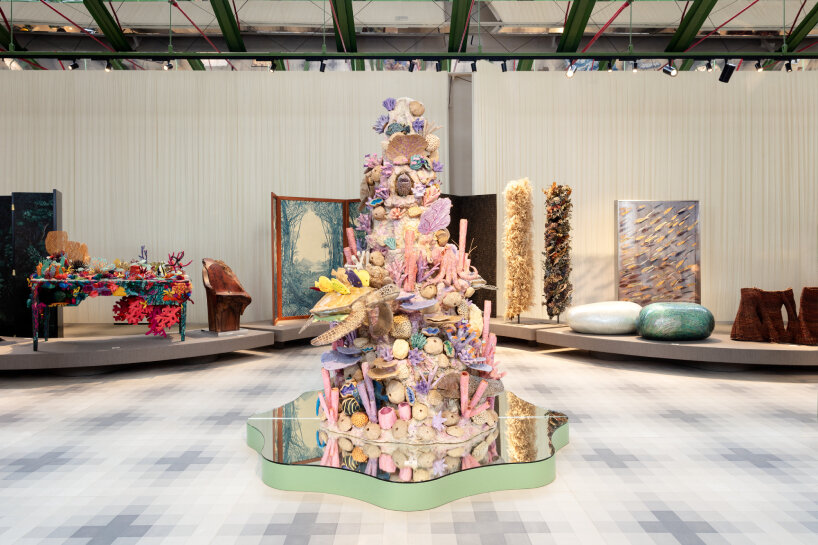
Reef, Josh Glukstein | artisan: Alexandre Vazquez
Contemporary crafts with over 800 objects by 400 artisans
Still, the main stars of Homo Faber 2024 are the craftspeople and their crafts, the way they make art, and the art itself. The event spotlights more than 800 objects by more than 400 artisans from more than 70 countries around the world. Some of these objects and processes aren’t immobile because some artisans stage live demonstrations and participatory workshops on how they make their art and crafts. Visitors can join and learn the techniques in making vases, laces, globes, watches, jewelry, shoes, writing instruments, and more. They may be able to embroider murmurations, a depiction of a huge flock of starlings, and make their own Japanese bookbinding, guided by master artisans and presented by Mazda.
If they wish to just gaze, they can marvel at craftsmanship and techniques such as the ones found in Sala Bianca. A room full of flowers, visitors meet an enfilade of vitrines right before their eyes and flowers made of paper. The art directors also shed light on the history of Fondazione Giorgio Cini’s architecture. While in previous editions they were hidden, Luca Guadagnino and Nicolò Rosmarini decide to exhibit photos of their restoration in the 50s through a collage of black-and-white images. In its own form, the restoration exudes craftsmanship that Homo Faber 2024’s theme resonates with. ‘It has been a tremendous experience of reflection on many of the great inspirations that have led our ideas, from Carlo Scarpa to the memory and history of Venice as a city of art,’ says Luca Guadagnino.
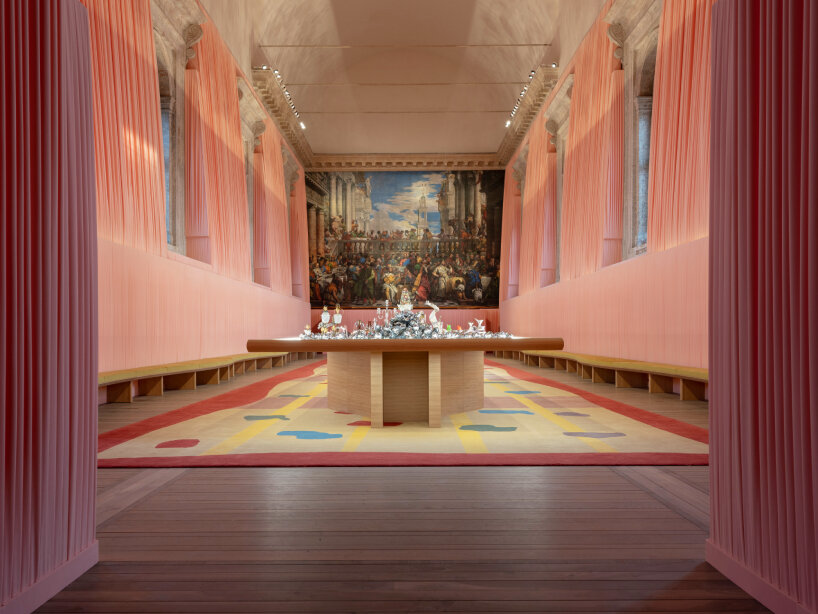
Celebration, Giulio Ghirardi
Homo Faber 2024 isn’t just on the island of San Giorgio Maggiore. It spreads out across the city of Venice as artisanal workshops for the city visitors. Seventy ateliers open their doors to the public, without the need for pre-booking, where they can dabble in the local arts and crafts of the city. Fondazione Cologni dei Mestieri d’Arte has developed the program with the support of Cartier and in collaboration with prestigious Venetian institutions, so Homo Faber 2024 can extend its events, exhibitions, and presentations. The list of events includes an exhibition entitled L’Italia nel cuore at the Hotel Splendid Venice – Starhotels Collezione, and a series of events each Wednesday evening at the Fondaco dei Tedeschi until the end of September 2024.
Perhaps the roots of Homo Faber 2024’s theme stem from objects dearest to people’s lives; at least that’s the impression Hanneli Rupert may leave. ‘I am particularly excited by the geographic variety of crafts and skillsets that we are showcasing side by side, many of which urgently need help to keep them alive for future generations to appreciate,’ she says. She chose ‘The Journey of Life’ as the foundation for Luca Guadagnino and Nicolò Rosmarini to work on because these words may sound simple, but their depth is philosophical and profound, a phrase masters such as the Italian filmmaker may help light up as a scenography. ‘Never in my wildest dreams could I have imagined the beauty and simplicity of vision with which Luca Guadagnino and Nicolò Rosmarini could have interpreted this,’ she adds. And in Venice, her statement rings true.
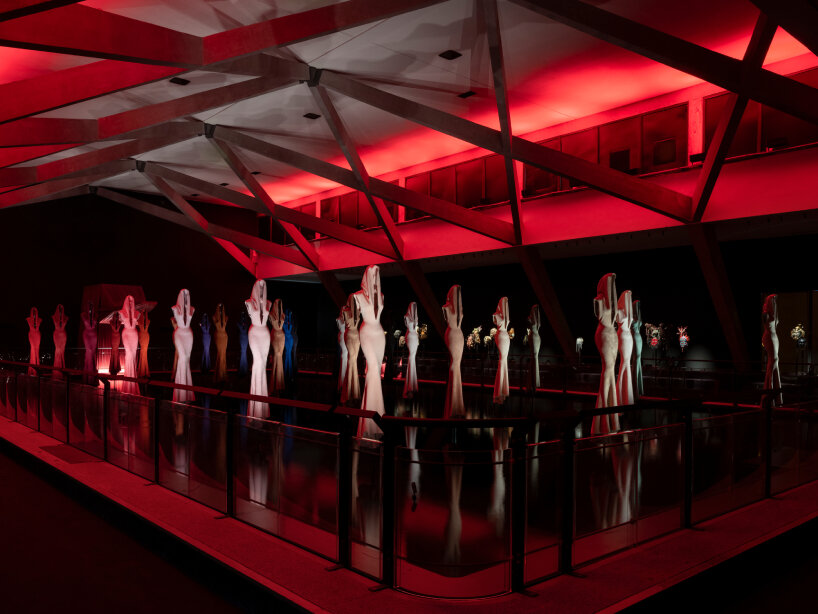
Dreams, Giulio Ghirardi
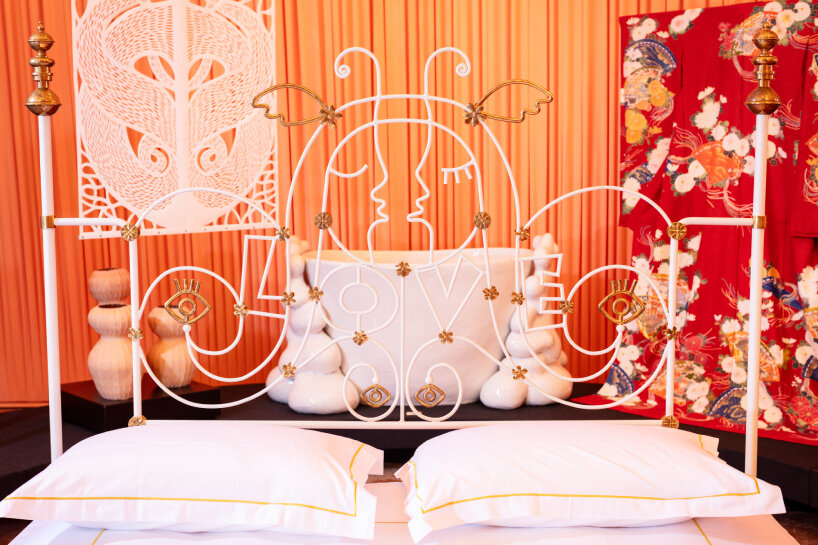
Love bed, Charlotte Colbert and Peter Reed | artisan: Alexandre Vazquez
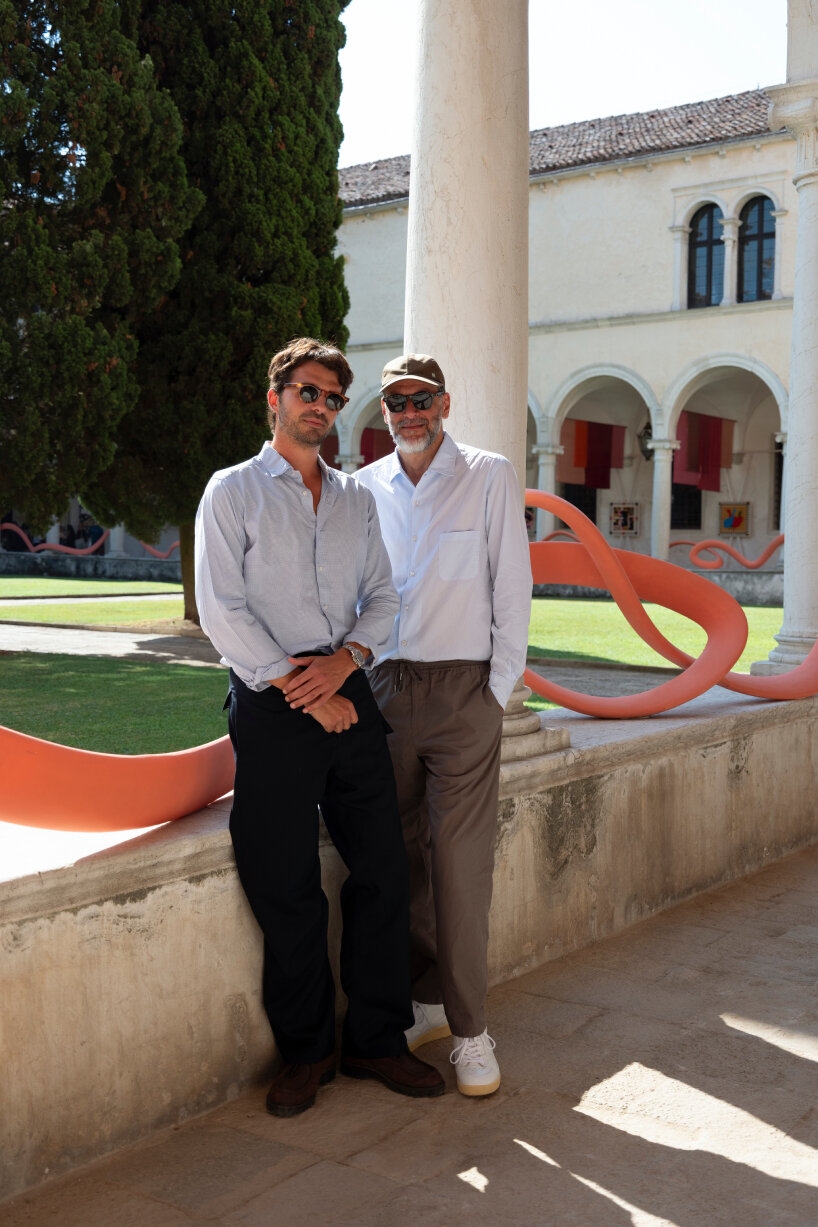
Nicolò Rosmarini and Luca Guadagnino
